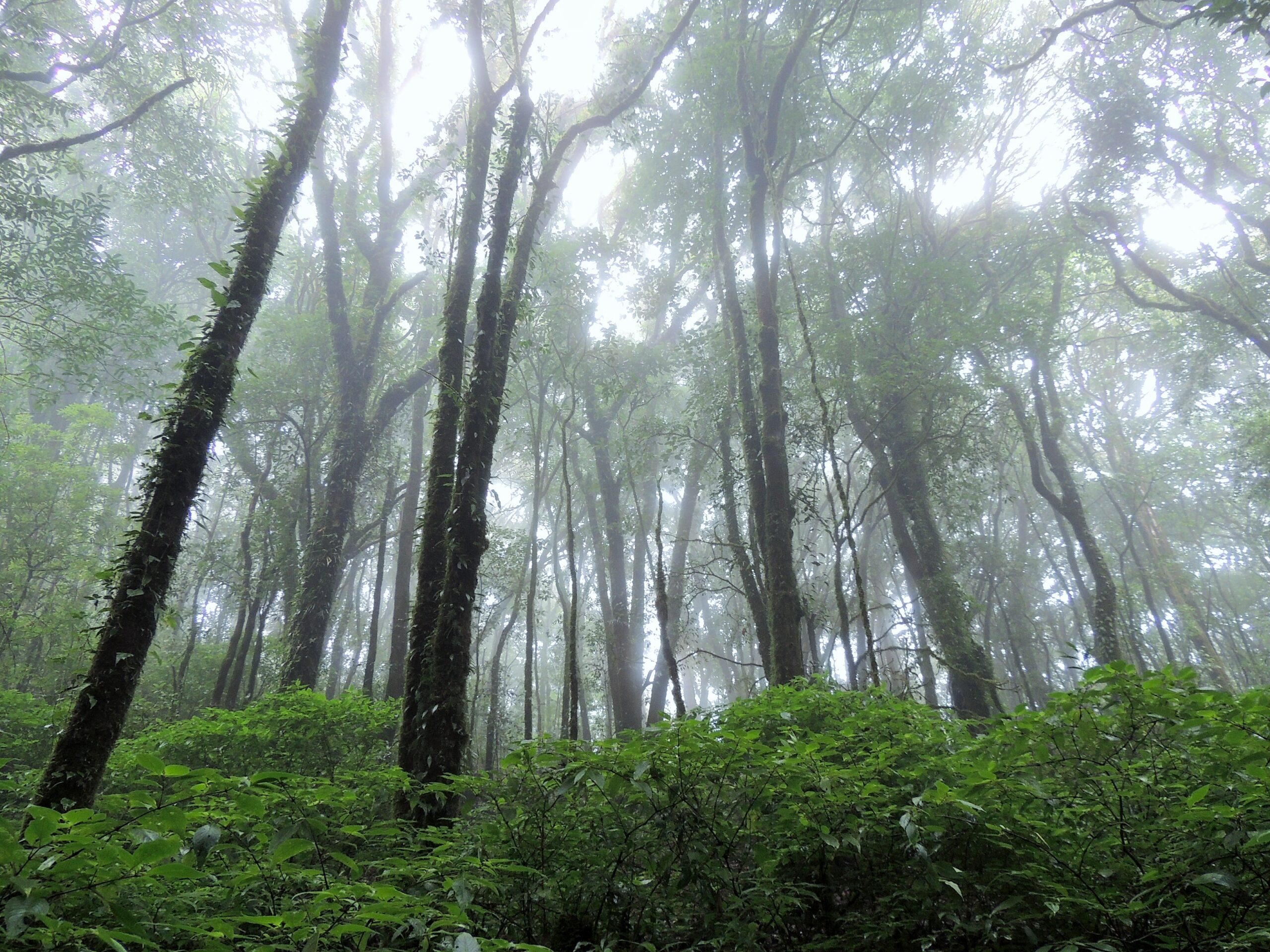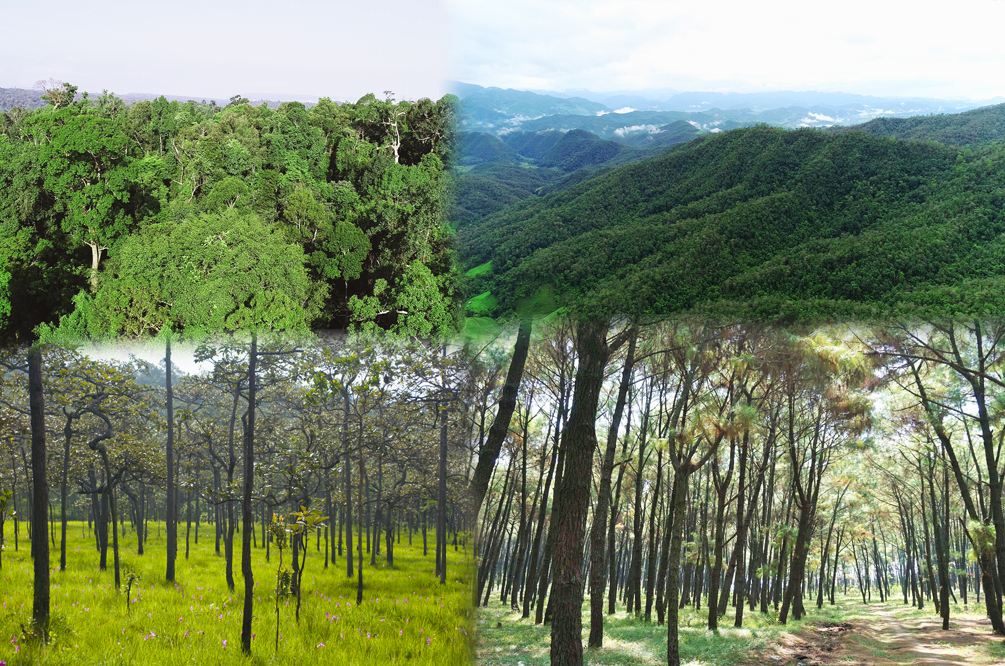
To reduce greenhouse gas emissions from forest encroachment and forest degradation. promote forest conservation Sustainable forest management and increasing local carbon storage capacity
1. Increasing the potential and knowledge of climate change in the forest sector and the RED Plus action framework as follows:
Training at the agency level under the Bureau of Conservation Area Management at the community level, women and youth given to the academic group The Office of Conservation Area Administration operates in the area of local administrative organizations / sub-districts. The Forest Environment Division operates.
| target group | Number of people in the fiscal year | note | |||
| 2557 | 2558 | 2559 | 2560 | ||
| community | 1,240 | 1,235 | 570 | 570 | |
| youth | – | – | 200 | 150 | |
| female | – | – | 100 | 90 | |
| National Park Service officials | 140 | 100 | – | 440 | |
| Staff of other departments and educational institutions | 150 | – | – | – | |
| National Park Service officials and communities | 200 | – | – | – | |
| Local Administrative Organization/Subdistrict | 180 | 80 | – | – | |
| 1,910 | 1,415 | 870 | 1,250 | ||
2. Other training and meetings To exchange knowledge on climate change operations in the forest sector
| Course/Subject | target group | Number of people in the fiscal year (person) | operation unit | |||
| 2557 | 2558 | 2559 | 2560 | |||
| knowledge of forest law environment and international agreements | public sector
Sub-district Administrative Organization |
– | 140 | – | – | forest environment division |
| Assessment of forest resources and carbon stocks in forest areas to support the implementation of the RED Plus Mechanism. | NPS staff and communities in the survey area | 41 | – | – | – | Forest Conservation Research Division |
| socio-economic data survey | National Park Service officials | 40 | – | – | – | Office of Conservation Area Management |
| community | 40 | – | – | – | ||
| the development of folk researchers | community | 60 | – | – | – | |
| Local speaker on RED Plus | community | 40 | – | – | – | |
| Establishment of reference emission levels/forest sector reference levels | Or Sor. related agencies civil society, public sector, educational institutions | 45 | – | – | – | forest environment division |
| formulation and measures and needs at the community level to implement REDD PLUS activities | community | 200 | – | – | – | |
| Paying for Ecosystem Services and Redd Plus | National Park Service staff and communities | – | – | – | 30 | forest environment division |
| exchange of knowledge on the implementation of the project | Academic groups and project staff | – | – | – | 40 | forest environment division |
| Follow up on the annual performance of the project | Project staff | 100 | 80 | 80 | 80 | forest environment division |
| 366 | 220 | 80 | 150 | |||
3. A survey of community baseline data and factors affecting forest encroachment of communities that rely on protected forests of the Department of National Parks. of conservation area management offices 1-16, Saraburi branch, Phetchaburi branch and Lampang branch, totaling 126 villages. The village's data will be used for consideration in the development of pilot prototypes and operational planning. There will be an analysis of trends in the use of the forest and the ecosystem of the conserved forest where the community is located. for further management planning
4. Media for public relations and learning as follows
4.4 6 publicity videos
4.1 Manual for learning, 6 volumes, 8 titles
4.2 Brochures for public relations, amount 2 stories
4.3 3 publicity posters
4.5 5 series of mobile exhibitions
4.6 1 document on climate change in the forest sector
4.6 Documents/media published in other formats which are operated by all conservation area management offices and forest environment sections, such as files, student notebooks, flyers, exhibition sheets, etc.
5. Organizing exhibitions and disseminating knowledge on climate change, the forest sector and the Redd Plus framework at events and festivals. Of the 19 conservation area management offices participating in the project and the forest environment, an average of 3 times per year, a total of 57 times
6. Study and determine guidelines for the development of social impact protection systems Natural resources and environment (Safeguards) number 1 subject by Forest Environment Division
7. Establish a technical working group for the development of reference emission levels/forest sector reference levels and monitoring, reporting and verification systems of the REDD Plus framework. to set guidelines for implementation and preparation for regulating the development in such matters of the country which has a workshop to Set guidelines for the development of reference emissions/reference levels in the forest sector on May 11-12, 2016, and preliminarily drafted the requirements for developing emissions/reference levels as follows: definition of forest Selected activities Selected biomass, national level, etc.
8. Participation in the conference on climate change action in the forest sector and the Department of National Parks, Wildlife and Plant Conservation Redd Plus Framework to other agencies and civil society and sectors. 4 other parts, such as civil society meetings organized by RECOFTC
9. Participating in a meeting to prepare a greenhouse gas inventory in the forest sector. master plan preparation Implementation plans and measures on climate change in the forest sector with the main coordinating agencies of the country, namely Office of Natural Resources and Environmental Policy and Planning Thailand Greenhouse Gas Management Organization and others, 80 times per fiscal year


